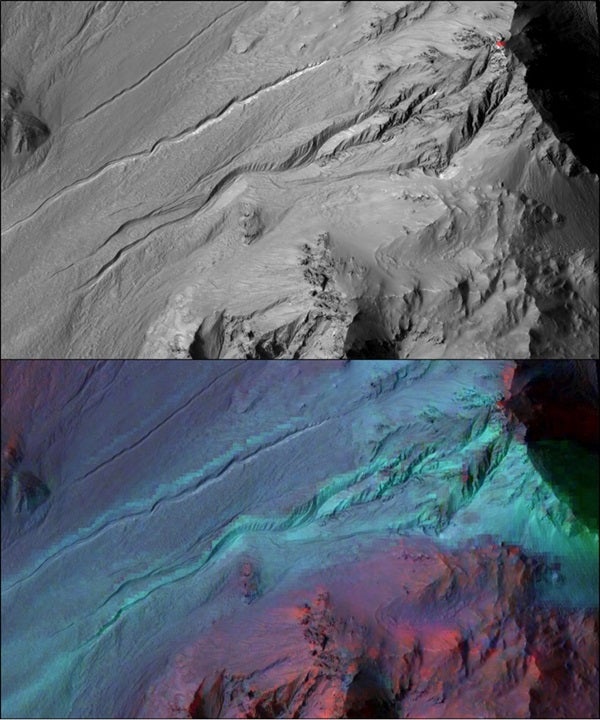Researchers looking for water on present day Mars may have to look beyond the gullies.
Using data from NASA’s Mars Reconnaissance Orbiter (MRO), researchers found that Martian gullies were likely not formed by flowing liquid water like those on Earth. These findings allow researchers to narrow down the theories on how they formed in the first place and reveal more information on Mars’ geological processes. The findings were published in the Geophysical Research Letters.
The term “gully” is used to describe features with three distinct characteristics: a channel, deposited material at the bottom, and an alcove at the top. Gullies are different from other similar features on Martian slopes, streaks called by the researchers “recurring slope lineae” (RSL). They can be distinguished by their seasonal darkening and fading, than how the ground is shaped for gullies. Water has been found in RSL sites in the form of hydrated salts, but this new study focused primarily on gullies and their formation process.
More than 100 gully sites on Mars were examined by researchers at John Hopkins Applied Physics Laboratory (APL) through the high-resolution compositional data taken by the orbiter’s Compact Reconnaissance Imaging Spectrometer for Mars (CRISM). This data was then correlated with images taken by the orbiter’s High Resolution Imaging Science Experiment (HiRISE) camera and Context Camera (CTX).
The data showed no evidence of liquid water or its by-products, showing that other mechanisms were at work to create these gullies. Researchers believe that the freeze and thaw of carbon dioxide frost could be the major drivers of the gully formation.
They are a very widespread feature on the surface of Mars and occur mostly between 30 and 50 degrees latitude in both hemispheres. Similar gullies on Earth are formed by the flow of liquid water, but currently Mars is devoid of liquid water, with occasional traces of brine in RSL streaks. This lack of water to create the gullies, as resulted in many theories to explain their creation, ranging from carbon dioxide frost to the evaporation of water.
“The HiRISE team and others had shown there was seasonal activity in gullies — primarily in the southern hemisphere — over the past couple of years, and carbon dioxide frost is the main mechanism they suspected of causing it. However, other researchers favored liquid water as the main mechanism,” said Jorge Núñez, an APL researcher and the lead author of the paper, said in a press release. “What HiRISE and other imagers were not able to determine on their own was the composition of the material in gullies, because they are optical cameras. To bring another important piece in to help solve the puzzle, we used CRISM, an imaging spectrometer, to look at what kinds of minerals were present in the gullies and see if they could shed light on the main mechanism responsible.”
A new CRISM data product called Map-projected Targeted Reduced Data Records was very helpful in the researcher’s quest for answers. It made their analysis of the data easier and correlate the findings with the HiRISE imagery.
“On Earth and on Mars, we know that the presence of phyllosilicates — clays — or other hydrated minerals indicates formation in liquid water,” Núñez said. “In our study, we found no evidence for clays or other hydrated minerals in most of the gullies we studied, and when we did see them, they were erosional debris from ancient rocks, exposed and transported downslope, rather than altered in more recent flowing water. These gullies are carving into the terrain and exposing clays that likely formed billions of years ago when liquid water was more stable on the Martian surface.”
Computer models from other researchers have been made to show how the sublimation of carbon dioxide can create features similar to gullies seen on Mars and how similar their shape can be to those created by liquid water on Earth. Sadly, it may seem the chances of water flowing freely on the surface of Mars at one point in its life are decreasing.










